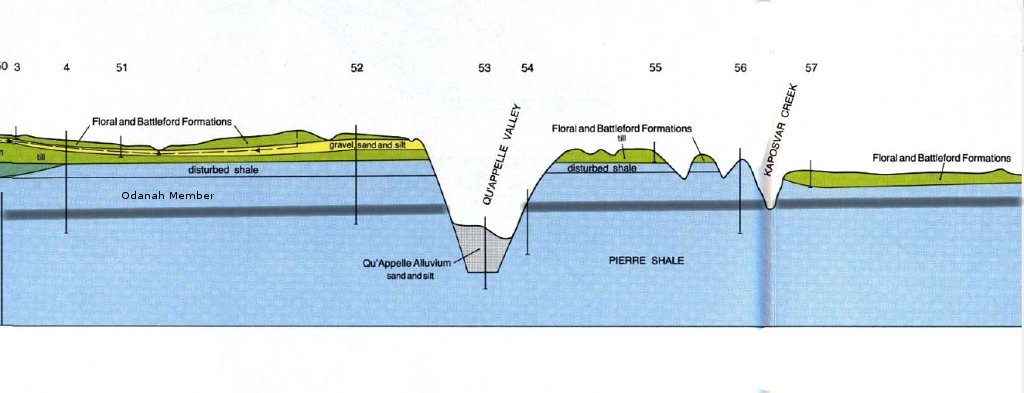Aber, J.S. 1989. Spectrum of constructional
glaciotectonic landforms. In: Goldthwait, R.P. and Matsch, C.L.,
Eds. Genetic Classification of Glacigenic Deposits: Final Report
of the Commission on Genesis and Lithology of Glacial Quaternary
Deposits of the International Union for Quaternary Research
(INQUA). A.A.Balkema, Rotterdam. pp. 281-292.
Aber, James S., Croot, David S., and Fenton,
Mark M., 1989. Glaciotectonic Landforms and Structures. Kluwer Academic
Publishers, Dordrecht.
Aber, J.S., Bluemle, J.P., Brigham-Grette, J., Dredge, L.A., Sauchyn,
D.J. and Ackerman, D.L. 1995. Glaciotectonic map of North America,
1:6,500,000. Geological Society of America, Maps and Charts Series,
MCH079.
Benn, D.I. and Evans, D.J.A. 1998. Glaciers and Glaciation. Arnold.
Boulton, G.S., 1986. Push-moraines and glacier-contact fans in
marine and terrestrial environments, Sedimentology, p677-698.
Clayton, L., Teller, J.T. and Attig, J.W. 1985. Surging of the
southwestern part of the Laurentide Ice Sheet. Boreas 14:
235-241.
Ehlers, J, ed. 1983. Glacial Deposits of
North-West Europe. A.A. Balkema. Rotterdam.
Knight, J., 2001. Field Geological Evidence
Supporting a Stick-Slip Mechanism of Basal ice Flow From a Late
Pleistocene Ice Sheet. AGU 2001 Fall Meeting.
http://www.agu.org/meetings/fm01/fm01-pdf
Kupsch, W.O. 1962. Ice-thrust ridges in western Canada. Journal of
Geology 70:582-594.
Ringberg, B. 1983. Till stratigraphy and glacial rafts of chalk at
Kvarnby, southern Sweden. In: Ehlers, J. Op.Cit. p. 151-154.
Saskatchewan Soil Survey, 1987. The soils of the Moosomin, Martin,
Rocanville and Spy Hill Rural Municipalities Nos. 121,122,151,152
Canada National Land and Water Information Service, SKS207.
http://sis.agr.gc.ca/cansis/publications/sk/sks207/intro.html
Stalker, A. MacS. 1963. Quaternary
stratigraphy in Southern Alberta. Geological Survey of Canada, Paper
62-34.
USGS, 2000. Quaternary Geologic Atlas of the
United States, Winnipeg 4° x 6° Quadrangle, U.S. and Canada,
Miscellaneous Investigations Series, Map I-1420 (NM-14).
http://pubs.usgs.gov/imap/i-1420/nm-14/I-1420_nm-14_screen.pdf
|

